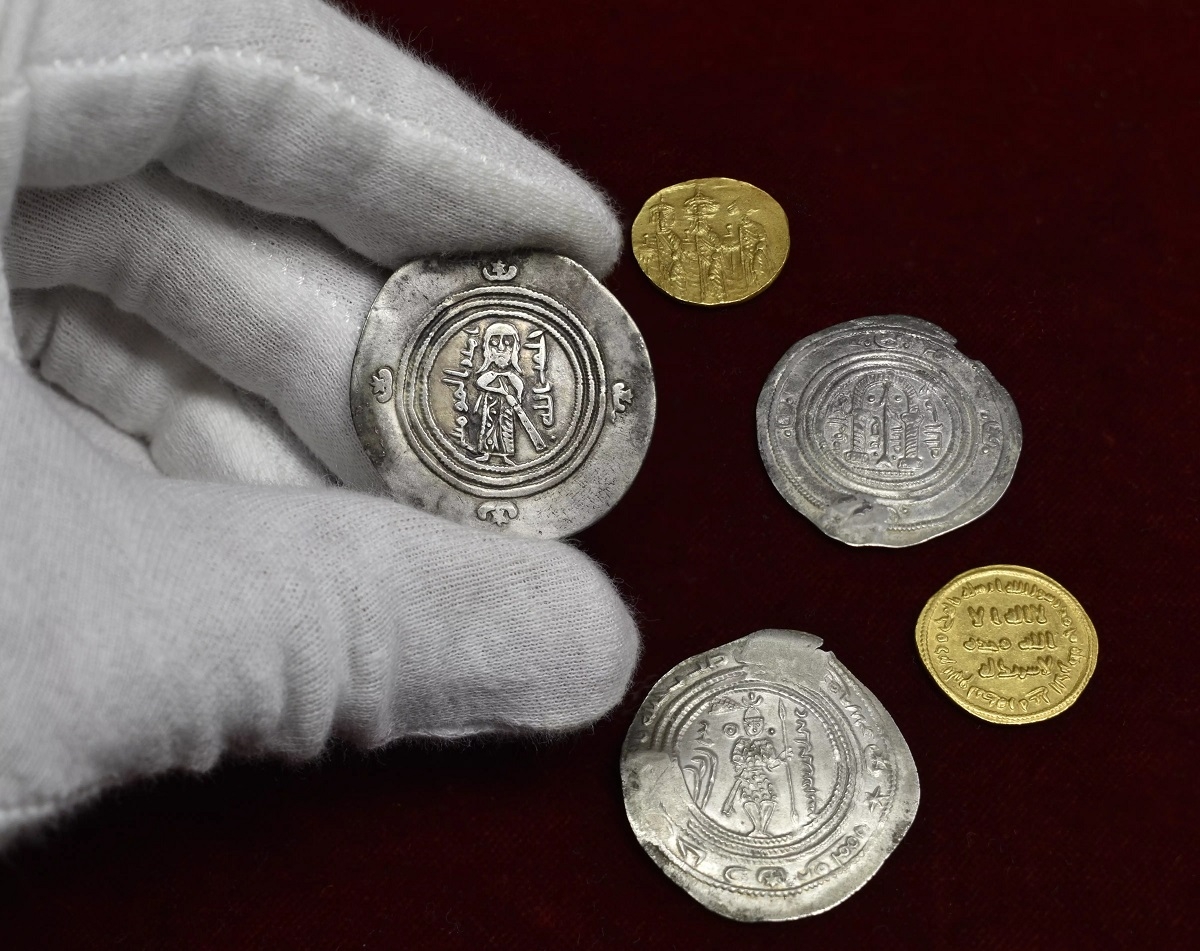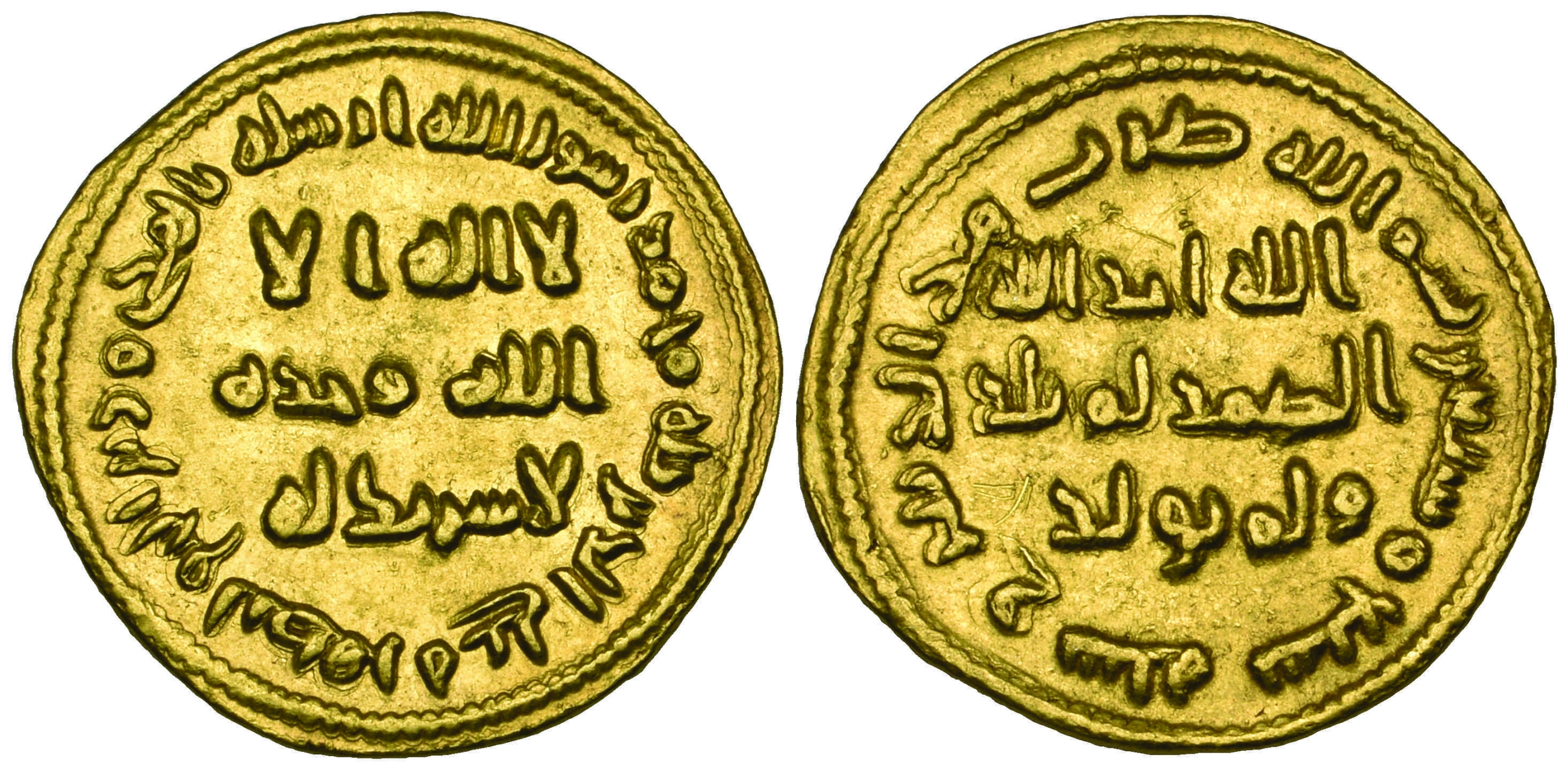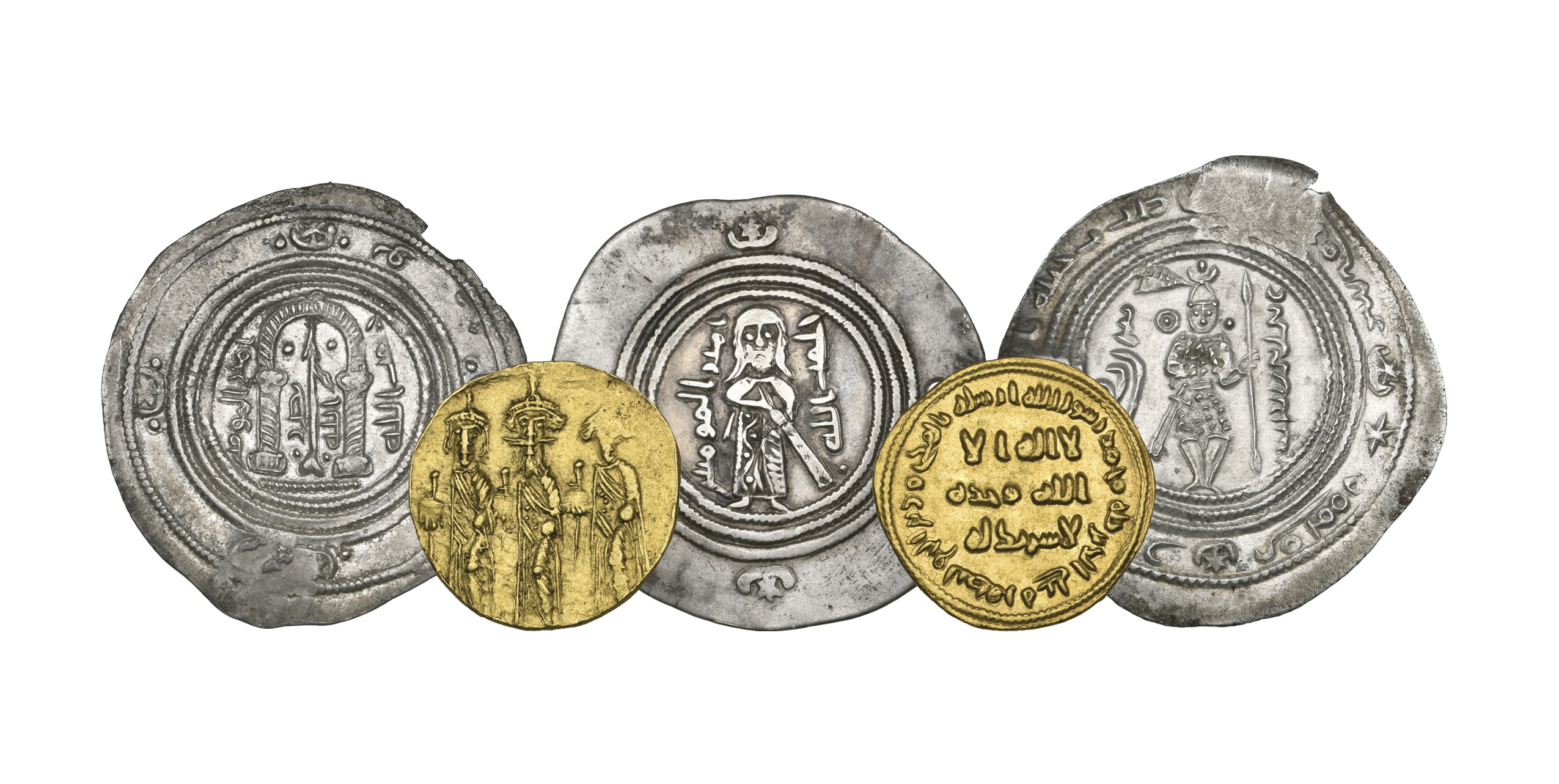Five rare coins tell the story of the expansion of Islam from Arabia and provide historical proof of the birth of a purely Islamic currency.
Issued date: Friday August 25, 2023 – 1:16 pm
|
Last update: 8 months 3 weeks before
They have survived more than a millennium since their creation. Five pieces of Ier century of Islam shows how the new civilization adapted the currencies of existing empires and then minted its own unique Islamic coins. Today they are more valuable than ever: during a sale of important pieces made on October 22, 2020 by the London auction house Morton & Eden, the sum exceeded one and a half million euros. (Photo credit: Morton & Eden)

Before using coins, the Arab economy was based on exchange; the inhabitants exchanged food, cattle, but also spices and rare perfumes such as frankincense and myrrh acquired during their travels. After the death of the prophet of Islam, Muhammad, in AD 632, the Islamic empire continued to expand under the Umayyad Caliphate. In VII Arabiae century, coins of the defeated Byzantine and Sassanid empires – which encompassed modern-day Syria, Jordan, Lebanon and Egypt – were the first to be used by Muslims. One of the earliest examples of a gold coin is a solidus (Roman coinage) with a “modified cross” dating from the 600s – very few coins of that type have survived. (Credit: Morton and Eden)

“When it came to minting new gold coins, the existing Byzantine prototypes were used, but any overt Christian symbolism, such as a cross, was simply removed,” explains Stephen Lloyd, coin specialist at Morton & Eden. “In the early years of the great Islamic conquests, there was no monetary tradition, so rulers simply adapted or were inspired by the currency then used for their own purposes. » Like this Arab-Sasanian silver coin nicknamed the “Standing Caliph”: one side represents a standing man holding a sword, presumably the Umayyad caliph Abd al-Malik. The popular coin was later minted in gold and copper in Syria, where the city of Damascus served as the capital of the caliphate. (Credit: Morton and Eden)

The other side of the “Standing Caliph” represents the crowned bust of the Sasanian king Khosrow II (591-628 AD). The coin is similar to the silver drachmas that were in circulation at the time. Near this point in history, Islamic conquests extended both east and west, uniting the ancient Byzantine and Sassanid empires, along with their currencies, under one imperial authority. (Credit: Morton and Eden)

The Mihrab and Anaza drachm take their name from their unique design. It has one of the first depictions of a mihrab (arch), a curved structure often found in Islamic architecture. In the center is the anaz (spear), in honor of the one said to have been carried by the prophet Muhammad. Researchers have also suggested that the coin may have been used as military currency, as armor is depicted on it. (Photo credit: Morton & Eden)

“After three decades of various hybrid coins, in Hijra 77 (AD 696), the first Umayyad gold dinar was minted, heralding the birth of a new, purely Islamic currency,” Develops Lloyd. These coins marked a change in design, as unlike previous coins there were no images – just clear, simple quotations from the Koran. Contrary to the Christian doctrine of the Trinity, these coins are engraved with words that emphasize the unity of God, such as “There is no God but God”, in Arabic letters.
“Abd al-Malik ibn Marwan’s introduction of a single, unified and distinct Islamic gold currency was rightly considered a milestone in the early history of Islam. The gold dinar is beautiful in its remarkable simplicity and is clearly and uncompromisingly Islamic,” comments Lloyd. (Photo credit: Morton & Eden)

The new dinars bearing a Quranic inscription became the common currency under the rule of the Umayyads. This style of coinage was not modified until after the fall of the Caliphate in AD 749, although many inscriptions introduced by Caliph Abd al-Malik were also spotted on later coins issued under the Abbasid Caliphate almost six centuries later. Coins from the early Islamic period can still be found around the world, including those pictured above, which belonged to foreign private collectors and were returned to Egypt’s Supreme Council of Antiquities in 2010. (Credit: AFP)

Coins from the early Islamic periods that survive today are highly sought after by both Arab and international collectors. One of them was recently bought by a private European collector for £3.7 million (over €4 million) at auction in October 2019. “This remarkable dinar, which broke all records, represented the first Islamic gold coin to name a place in Saudi Arabia, and in fact the oldest dinar in the Gulf region,” says Lloyd. “There is strong reason to believe that the gold used in its manufacture came from a mine located between the holy cities of Mecca and Medina: a mine. belonging not only to several caliphs but which was given to another previous owner by the Prophet Muhammad himself. . »
Collections of Islamic coins are displayed at the Louvre and the Arab World Institute in Paris, the British Museum in London, the Ashmolean Museum in Oxford, and the Coin Museum in Dubai, among others. (Credit: Morton and Eden)

